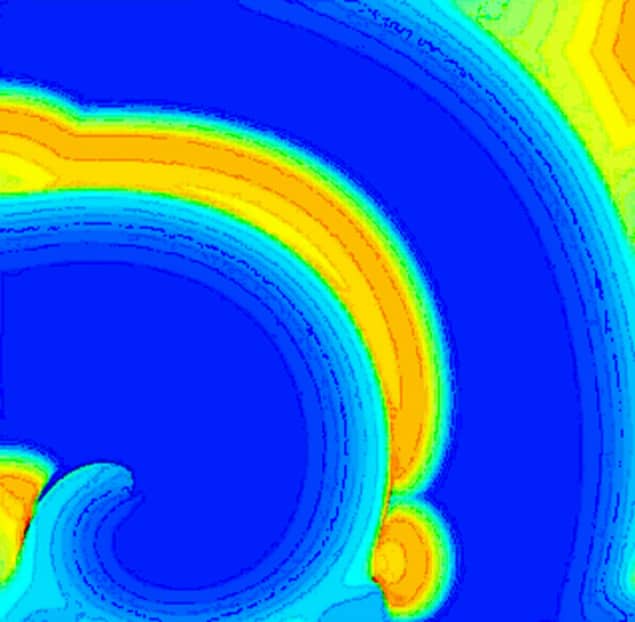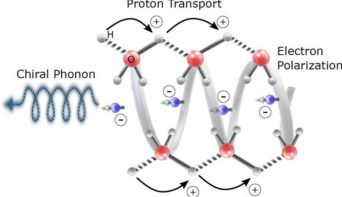
A mechanism that could break up potentially deadly spiral waves in heart tissue has been identified in simulations done by a team led by Sasha Panfilov at Ghent University in Belgium. Spiral waves can cause irregular heartbeats (arrhythmias) and the team says that the newly discovered mechanism could help stop this potentially deadly condition.
The heart is a mechanical pump that is governed by electrical activity. Researchers also know that the mechanical deformation of the heart by external forces can affect its normal operation – a process called mechano-electrical feedback (MEF). Physical impacts to the chest are known to both cause and correct arrhythmias, for example, and impacts can even cause death.
Colliding waves
The team simulated MEF using a 2D computer model of the electrical and mechanical properties of heart tissue. Spiral waves were initiated in the simulation and then the system was subjected to simulated mechanical pulses of varying duration and strength. Under some circumstances the pulse causes a spiral wave-front to collide with the preceding wave-back. In some cases, this causes the spiral wave to dissipate.
Writing in Physical Review Letters, the team says that its predictions could be tested experimentally in systems including excised heart tissue, cell cultures and living hearts.



